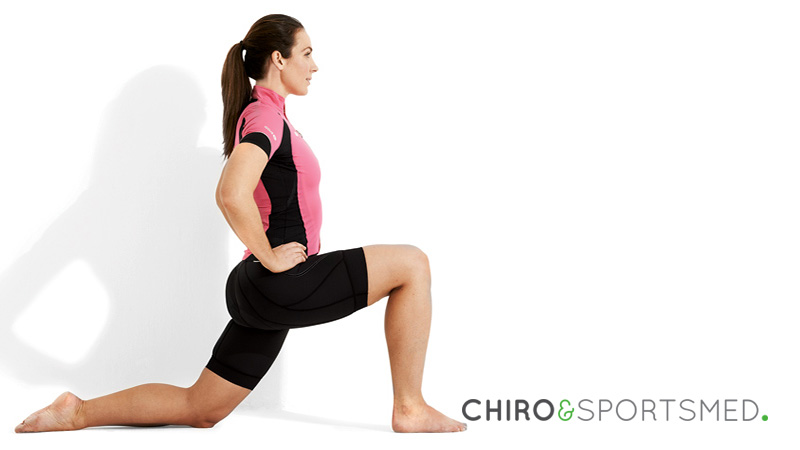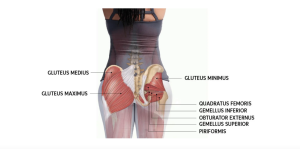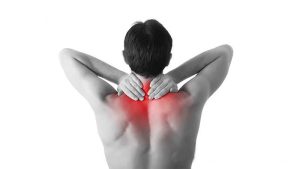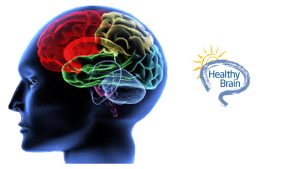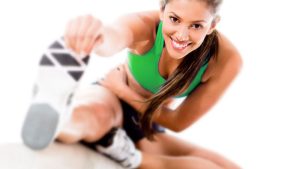Weak Glute Muscles and back pain
The Gluteal muscle (butt Muscle) is most important of all the skeletal muscles in your body. They consist of the gluteus minimus, medius, and Maximus. Maximus is the largest muscle of the three. The glute muscles stabilize your pelvis during running and walking. You need strong glutes to help with hip extension and forward propulsion. It helps move your thigh in different directions. Every time you take a step, you’re using your glute muscles.
When the glutes aren’t doing their job, muscle function and movement mechanics in the hips – as well as strength, power, mobility, stability, posture, and athletic performance all suffer. Their function is to allow us to run, walk, climb stairs, squat, and move. Proper alignment of the pelvis, torso, and legs also depends on strong glutes and plays an important role in maintaining your balance. We need to keep this muscle healthy and active.
How it affects back pain
There is a strong link between lower back pain and weak glute muscles. If your glutes are not strong, your entire lower body alignment may fall out of balance. Weak glutes lead to lower back problems. If you are finding yourself feeling sore in your legs, back, or both for even a short period then weak and inactive glutes could possibly be contributing to your back problems. Your lower back depends on your hip flexors, glutes, and hamstrings to work properly to remain balanced and safe. All three Gluteal muscles have important roles to play in assisting with the stabilisation of the lower back and pelvis, as well as extend, externally rotate the leg and adduct or abduct the hip.
When you lose hip mobility you take more movement from the lower back. Lose movement in one place and you move more in another. The back hurts because it’s overworking. The best thing to help your lower back is to activate your glutes. When the glutes start to weaken, compensation occurs elsewhere. The legs, and hips, the lower back, and quads must work harder to compensate.
Remember an inactive gluteus tightens hip flexors and curves the spine, throwing off posture and causing back pain. The more that you use your gluteus maximus, the less your back and knees will suffer. Having strong glutes is key to being pain-free.
Siting doesn’t help the Glutes
Unfortunately from all of the skeletal muscles the Gluteus muscle group is the most neglected. With a large percentage of our population spending the majority of their day sitting, we are developing what has become known as “sloppy bottom”. When you sit for long periods of time your hip flexors tighten up and prevent activation of the glutes. Your pelvis can’t rotate forward, causing compression in the lower back which can lead to back pain. Sitting also reduces the activity of the nerves that are involved in stimulating and contracting the muscles. This is very significant and detrimental to the healthy functioning of the glutes. Health practitioners are finding a marked correlation between the lack of strength in this glute area and chronic pain in the lower back, hips, knees, or ankles.
Glute activation
It is really important to activate your glute muscles. Your gluteus maximus is one of the largest and most dominant muscles in your entire body. This muscle controls and powers almost all of your lower body movements. It connects to your core, quads and hamstrings, and your iliotibial band that runs along the side of your legs. The iliotibial bands connects your glutes to your knees. If your glutes aren’t activating to their full potential you are then relying on other smaller muscles to do their work. You’ll fatigue, run slow, and be prone to injuries in your lower back, knees, shins, and ankles. Therefore a tight Gluteus Muscle and trigger points in your Piriformis can cause low back pain and tightness. They can even lead to hip pain and cause referred pain down your leg.
So how do you activate your glutes and build strength on your backside? You want to incorporate specific strength training exercises that isolate and target your glutes. There are many simple exercises that will create strong glutes without requiring you to spend hours at the gym. Exercises Like the Clamshell, the Glute Bridge, deadlifts, deep squats, lunges and step-ups will help activate those Glutes. It’s always best though to see your local chiropractor or health practitioner as they can assess you properly and provide you with the necessary exercises.
Remember the body is an interconnected system. If the muscles do not fire in the right sequence, other muscles compensate, resulting possibly in strain or injury. Weak glutes can’t stabilise your pelvis, which causes it to tilt forward. This puts pressure on your lower spine. As a result, the lower back can be injured if it is forced to do the hip-extending job of the glutes. The ankles can be strained if misused due to improper alignment caused by inactive glutes. Strengthening your glutes can help improve posture and make sitting down, standing, picking up heavy objects, and climbing stairs easier.
Chiro & Sports Med
Our chiropractors at Chiro & Sports Med are committed to providing chiropractic solutions to address your unique needs, whether you are experiencing an irritated nerve, bulging disc, back pain, neck pain, knee pain, headaches, or even muscular tightness and tension. You may be searching for pain relief after an accident or experiencing an injury. Our mission is to help reduce or eliminate pain and to prevent future problems and injury. Above all, we are here to improve your quality of life, well-being, and your ability to live an active healthy lifestyle.
If you would like to make an appointment with one of the chiropractors at Chiro & Sports Med simply call our office on 9817 2005 and one of our friendly staff will organise an appointment for you.
